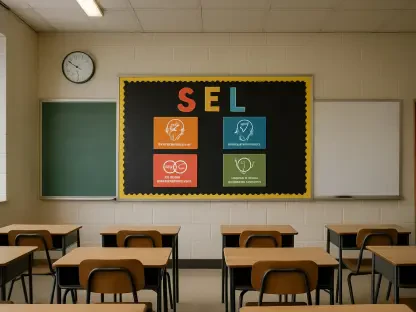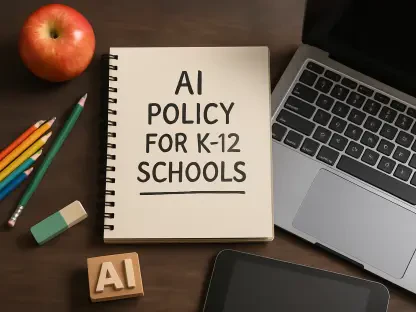North Carolina schools are grappling with a financial crisis spurred by the freezing of federal funds. The U.S. Department of Education’s decision to withhold over $6 billion, affecting numerous educational initiatives, has left schools, administrators, and policymakers in a state of uncertainty. This financial turmoil has led to legal actions from North Carolina’s Attorney General Jeff Jackson and 24 other states, challenging the legality of this funding freeze. As these critical resources were allocated for educational purposes by Congress, stakeholders argue that the withdrawal is unconstitutional, generating widespread concern about its implications for public education in North Carolina.
The Impact of the Federal Fund Freeze
Fiscal Challenges and Their Effects on Education
The freezing of federal funds poses a significant threat to the fiscal stability of North Carolina’s public schools, with over $165 million in educational priorities now in jeopardy. This funding cutoff represents nearly 10% of the state’s total federal education funding, creating a substantial financial hole that comes at a challenging time for educators and administrators. The potential job loss of nearly 1,000 educators looms large, given the current landscape already strewn with budget constraints and teacher shortages. As a consequence, these schools are forced to reassess their financial strategies and reallocate resources in ways that may sometimes compromise the quality of education.
Understandably, there’s a shared concern among educators, district officials, and advocacy organizations about the longer-term impact of withheld funds, particularly in critical areas such as after-school and summer programs, English language instruction, and adult literacy programs. These programs are often lifelines for many students who rely on additional support to succeed academically and personally. Educational leaders have voiced apprehension that students, especially those from underprivileged backgrounds, may be the ones who bear the brunt of these setbacks as the educational system in the state further stretches thin amidst continuing fiscal adversity.
Local Implications and Operational Shifts
The delay in funds has emphasized the susceptibility of the current educational financing framework and underscored the intricate connection between federal funding and local operations. The Department of Education’s centralized decision-making highlights how such actions resonate locally, impacting school district operations significantly. In North Carolina, the disparity between larger urban districts and smaller rural communities becomes more pronounced, as financial fragility is exacerbated in areas with limited local revenue sources. In these rural environments, adaptations to practices and protocols have proven challenging given minimal access to alternative funding streams, differing starkly from urban counterparts who may mitigate losses due to a larger tax base.
School districts are now laboring under the necessity to adopt creative measures to sustain vital services in the wake of these fiscal constraints. For massive school systems like the Wake County Public School System, which now confronts an estimated $8.1 million funding deficiency, strategies are needed to balance programmatic intentions with fundamental educational responsibilities. In smaller districts without economies of scale, repercussions are potentially more profound and could damage essential programs reliant on federal support. The challenge now is for educational coalitions to explore reallocation of existing resources or seek additional funding streams through state or local interventions while ensuring minimal impact on teaching and learning outcomes.
In Pursuit of Solutions and Advocacy
Engaging Leadership and Community Advocacy
In reaction to this financial instability, North Carolina school representatives have pursued aggressive legal challenges while channeling considerable efforts toward local-level problem-solving strategies. Attorney General Jackson, State Superintendent Mo Green, and various district leaders have spearheaded these initiatives, focusing on both legislative amendments and judicial appeals. Through intricate collaboration, these officials have sought to embody a unified stance against the discrete financial clout imposed by federal policy decisions. This cohesive push reverberates through school board meetings, as leaders accentuate the essential nature of federal funds in addressing educational equity and promoting comprehensive outcomes for students of all backgrounds.
Moreover, an observable bipartisan consensus has emerged regarding the adverse potential of the funding freeze’s extension. Recognition of the detrimental impact of this financial void on fundamental aspects of the educational ecosystem prompts cross-party initiatives aimed at fostering collaboration and mutual goals. At the community level, educational advocates continuously underscore the significance of a consistent funding stream in fostering academic excellence and bolstering programs that benefit both academic and personal growth among students statewide. Community networks have also played a pivotal role in amplifying voices of concern over the potential ramifications as state leaders strive for timely solutions.
Uncovering Financial Pathways and Resilient Strategies
Amid the uncertainties, North Carolina schools are vigorously exploring alternative pathways to finance educational endeavors. District leaders recognize the adverse effects of educator layoffs and compromised programs and are motivated to devise solutions aimed at securing continuous educational opportunities. By leveraging existing resources and considering innovative reforms, school districts aim to maintain educational standards. Programs are being analyzed to identify possible reallocation of funding, with districts contemplating adjustments to non-essential activities and exploring collaborative partnerships within their communities to shore up the loss of federal monies.
Additionally, school districts have initiated appeals to local and state governments to shore up waning budgets until resolution with federal entities can be attained. The focus now extends into a broader discourse around sustainable financial models that preclude such vulnerabilities. In doing so, the advocacy for robust and reformative educational funding centers on equitable distribution models that transcend the immediate crisis. By pursuing these avenues, public schools aim to fortify their frameworks against uncertain federal actions while sustaining the educational mission amidst fiscal challenges.
Toward a Sustainable Educational Future
North Carolina’s educational system faces a daunting financial crisis due to the recent freezing of federal funds by the U.S. Department of Education. The decision to withhold over $6 billion, which impacts numerous educational initiatives across the state, has plunged schools, administrators, and policymakers into a state of uncertainty and concern. This financial upheaval has prompted North Carolina Attorney General Jeff Jackson, alongside attorneys general from 24 other states, to initiate legal proceedings challenging the legality of the funding freeze. These funds were initially designated for educational purposes by Congress, and stakeholders argue that their withdrawal is unconstitutional, raising widespread apprehension about the future of public education within North Carolina. This situation underscores the critical need for resolving this impasse, as educators and lawmakers strive to safeguard educational standards and opportunities for students amidst these financial constraints.









